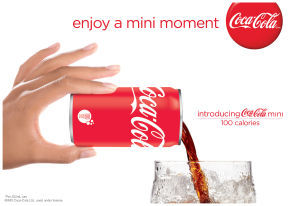A few weeks ago, Beverage Digest posted the latest market share statistics for the US carbonated soft drinks (CSD) category and we found out that Pepsi had slipped to number 3 (see stats here). Industry analysts had predicted that this market share change was coming as Pepsi had lost share in the last few years, as Coca-Cola has stayed the course with their beverage unit and maintained marketing Diet Coke in traditional media (TV/print/radio) while Pepsi started promoting other beverages in traditional media, and invested in other forms of marketing
It seems that as Pepsi sought to maintain a balance beverage portfolio by promoting other beverages (such as Pepsi Max, Sierra Mist, Aquafina Plus10, Mtn Dew, Gatorade, etc) that they forgot to keep promoting Pepsi itself. Their NFL sponsorship was recently changed from Pepsi to Pepsi Max, Superbowl advertisements followed the same course, and even the main TV commercials started promoting a Coke Zero vs. Pepsi Max cola war instead of focusing on Coca-Cola vs. Pepsi.
Was this the right decision for Pepsi – to focus on other beverages instead of their core product? Despite Pepsi’s balanced portfolio making them more formidable to withstand declines in any one category if they promote other products, the CSD category is still the largest beverage category. Even within the CSD category, promoting Pepsi Max, Mtn Dew, and Sierra Mist helps these brands gain traction and spread their risk if any one product sees slow sales. However, CSDs as a category is in decline, and Pepsi has been declining more than the category. And according to the Beverage Digest rankings, it’s not just Pepsi that lost market share, it’s also Diet Pepsi. Your two core products are in decline, while your competitor’s two core product maintain market share in a declining market, meaning they now own a bigger share in the CSD category. Even Sprite, another core product for Coca-Cola passed Diet Pepsi in the market share rankings.
Although this decline cannot be fully traced back to any one particular issue, I would answer that Pepsi’s decision to experiment with their marketing and promote other brands was a bad decision. The core of your business where you make the most money is still Pepsi and therefore you should be promoting Pepsi. In the largest marketing venues, Pepsi should be promoted and not Pepsi Max. Though whether they should allocate more spend at the expense of other brands is still questionable, promoting their core product more and through effective traditional media is a must.




